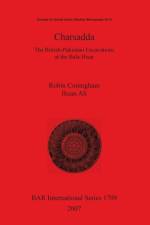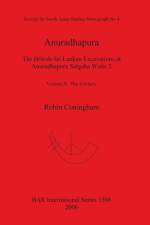- Volume III: The Hinterland
von Robin Coningham & Prishanta Gunawardhana
286,00 €
The third volume of the Anuradhapura series documents the results of six years of settlement survey, excavation and geoarchaeology in the hinterland of the Citadel. Mapping the response of rural communities to the growth of Anuradhapura as Sri Lankan capital and Indian Ocean pilgrimage centre, this interdisciplinary study presents the establishment and consolidation of settlement within the island's Dry Zone and the associated investment in hydraulic infrastructure from the first millennium BC onwards. It also traces the division of hinterland settlement into either Buddhist monastery or agricultural village with an absence of towns as well as the hinterland's subsequent collapse in the eleventh Century AD. Conforming to a model of Tropical Forest 'Low Density Urbanism', this volume presents the most detailed archaeology study of the dynamic and contested nature of a South Asia urban hinterland. (See also BAR S1508 and BAR S824)With contributions from (in alphabetical order) Gamini Adikari, Paul Adderley, Ian Bailiff, Cathy Batt, C. I. Burbidge, A. J. Cresswell, Christopher Davis, Randolph Donahue, Krista Gilliland, Jennifer Jones, Mangala Katugampola, Krishnan Krishnan, Mark Manuel, Gerry McDonnell, Harendralal Namalgamuwa, Umanga Roshani Rammungoda, David Sanderson, Armin Schmidt, Jayampath Senanayake, Ian Simpson, Ben Stern, Keir Strickland and Ruth Young




